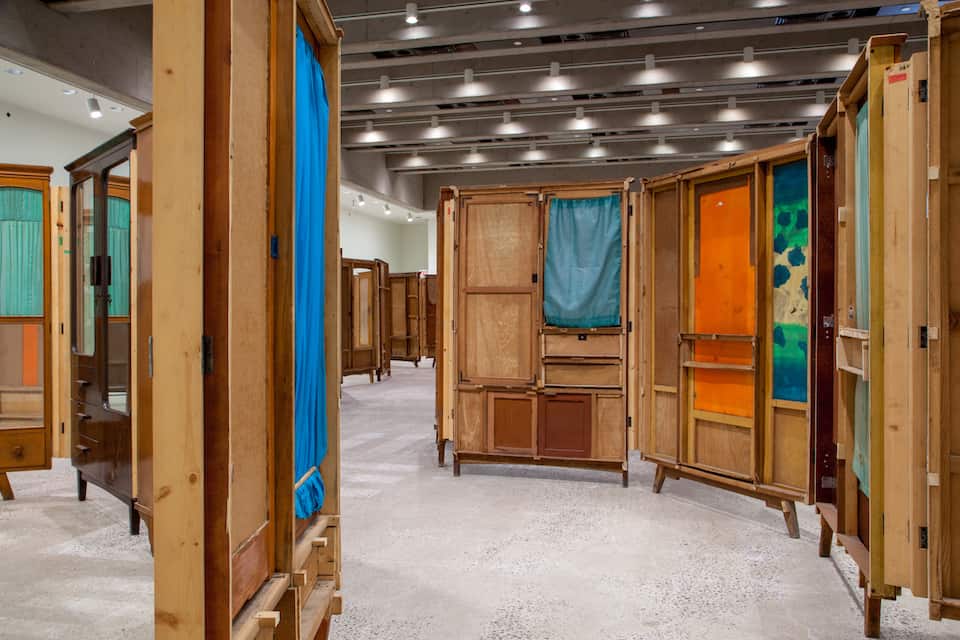On Saturday, January 30, contemporary Chinese artist Song Dong opened his latest art exhibit, Communal Courtyard, at the AGO. The exhibit is an homage to Beijing’s rural living spaces and features more than 100 vintage wardrobes linked together. Collectively, they form a series of labyrinth-like pathways, an artistic homage to domestic life in rural China.
The installation is part of Dong’s The Wisdom of the Poor series, a project that began in 2005 and focuses on low-income communities in, and around, Beijing.
At first glance, the wardrobe doors appear to be quite similar. Each appears to be crafted from the same wood, and all are the same shade of ochre. As it turns out, however, the differences amongst these wooden entranceways are based upon the scraps of history left on each one.
Bits of wallpaper, scratches, nails, and pencil sketches help form our impression of the individual who once owned this piece of furniture. Mirrors and stained glass windows are spread out amongst various pieces of furniture as well, and as viewers walk by, they’re caught off guard by sudden reflections of themselves.
Through the glass windows, visitors are able to see others walking through the parallel pathway. If a door is positioned close to another wardrobe, people are able to see both a glimpse of their reflection, and the silhouettes of other people walking by.
Shared living spaces were crucial to Dong’s development of Communal Courtyard. The wardrobes and wooden doors are all taken from traditional households in Beijing prior to the city’s rapid urbanization. Dong displays these household possessions in order to demonstrate his respect for both specific Chinese homes and the suburban environment as a whole.
In an interview played on screen the exhibit, the artist notes how he hopes to draw attention to Beijing’s rapid urbanization through depictions of a nation’s history. Since the Communal Courtyard is part of a larger collection, Dong notes how he strives to “incorporate the state of poor people wisdom into [his] work.” Dong shows how a community is “sharing public space,” and keeps it through an interactive installation of linked vintage wardrobes.
The overall enthusiastic mood in the gallery contributes to the visitors’ interest. As new viewers walk in, their curiosity is attracted by those who have already started exploring the Communal Courtyard.


